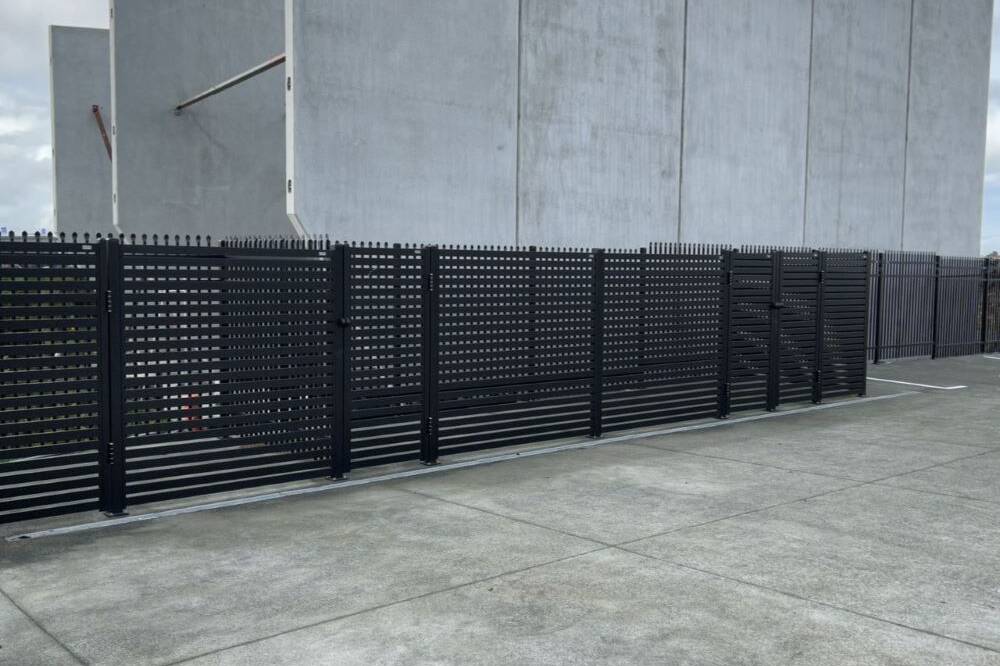Why Aluminum Pool Fences are the Future: Sustainability, Safety, and Style
Choosing the right pool fence is more than just a matter of fulfilling local regulations—it’s an investment in safety, sustainability, and the beauty of your outdoor space. Among the various materials available, aluminum stands out by uniquely balancing environmental responsibility, health safety, advanced material science, and modern aesthetics. Here’s why aluminum pool fences represent not only a practical choice but also a visionary one.
Sustainability: Choosing a Fence with an Eco-Conscience
Today, homeowners increasingly seek sustainable options that reduce their environmental footprint. Aluminum pool fences meet this criterion exceptionally well, primarily because aluminum is one of the most recyclable materials available. Unlike wood, which requires logging and maintenance with chemical preservatives, or steel, which often requires significant energy for production and recycling, aluminum fences offer a more eco-friendly lifecycle.
Recent research emphasizes the ease and efficiency with which aluminum scrap can be recycled into fence ornaments or new panels. Even small and medium-sized businesses can manage this recycling process cost-effectively, significantly reducing landfill waste and lowering the overall carbon footprint (Isnugroho et al., 2019). Indeed, aluminum’s high recyclability positions it as a leading material in sustainable home design.
Choosing aluminum for your pool fence thus represents more than a stylistic choice; it reflects a commitment to environmental stewardship and responsible resource management.
Health & Safety: Debunking the Aluminum Myths
When people hear “aluminum,” concerns about health risks, particularly related to food packaging and cookware, often arise. However, these concerns do not typically extend to outdoor structures like fences. In fact, properly anodized aluminum—the form commonly used in pool fencing—shows negligible risks of environmental leaching, even in chlorine-rich environments like swimming pools (Arnold, 1972).
Pool fencing primarily poses risks if materials corrode excessively, potentially weakening the structure. Anodized aluminum effectively resists corrosion, maintaining both its integrity and safety. Moreover, studies confirm that aluminum does not significantly contaminate pool water or soil when properly treated, making aluminum fences a safe choice around residential pools.
Therefore, aluminum pool fences not only ensure the physical safety of pool users—particularly children—but also provide peace of mind regarding broader environmental and health safety.
Innovative Material Technology: A Lightweight, Robust Solution
Aluminum may traditionally be perceived as weaker than steel, but advances in material science are rapidly changing that perception. The latest aluminum alloys (such as AA7085 and AA7056) deliver significantly improved corrosion resistance and structural strength, making them highly suitable for the demanding environment around swimming pools (Dillon et al., 2013).
Moreover, advanced manufacturing methods such as 3D printing (powder-bed fusion technology) are beginning to revolutionize the way aluminum fences are produced. These innovations allow for complex, high-strength designs previously impossible or prohibitively expensive with traditional fabrication methods. This combination of advanced alloying and manufacturing technology ensures aluminum fences can now achieve strength and durability comparable to heavier, more costly metals—while retaining their signature lightweight quality (Del Guercio & Simonelli, 2023).
In short, aluminum fences today are at the cutting edge of materials science, offering an ideal blend of strength, lightweight handling, and corrosion resistance.
Modern Aesthetics: Elegance Without Compromise
In addition to practical benefits, aluminum pool fences offer significant aesthetic advantages. Unlike wood, which often fades or deteriorates rapidly, or steel, prone to rust and heavy maintenance, aluminum remains sleek, contemporary, and stylish for many years. Its lightweight nature allows designers to create intricate and minimalist patterns that add visual appeal without sacrificing structural integrity.
Consumer trends reflect this preference clearly. Market research indicates that aluminum pool fencing is especially favored by homeowners who value a modern aesthetic paired with minimal upkeep (Liu et al., 2011). Aluminum’s clean, streamlined appearance aligns seamlessly with contemporary architectural styles, enhancing both property values and curb appeal—particularly in suburban markets, where pool safety and aesthetics often go hand-in-hand.
Regulatory Compliance: Easy Adherence to Standards
Most local and national regulations specify fence height, gate latching mechanisms, and barrier strength but rarely dictate materials. Aluminum fencing naturally fits within these requirements, thanks to its easily adjustable designs, lightweight structure, and customizable gate systems. It effortlessly complies with stringent safety regulations like AS1926.1-2012, which outline clear guidelines for secure pool fencing (Mahony & Willcox-Pidgeon, 2023).
Installation methods, such as embedding posts in concrete, further enhance the durability and regulatory compliance of aluminum pool fences. This ensures not only that homeowners meet local regulations but that they do so in a manner that enhances long-term safety and reliability.
Conclusion: The Aluminum Pool Fence—An Intelligent Choice
Selecting an aluminum pool fence isn’t just about choosing the strongest or most affordable option. It’s about recognizing the unique synergy between environmental responsibility, advanced material technology, safety, and modern aesthetics. Whether motivated by eco-conscious living, health considerations, advanced durability, or elegant design, aluminum fencing uniquely fulfills these needs.
In a world increasingly guided by sustainability and smart design, aluminum pool fences aren’t merely practical—they’re visionary. By embracing aluminum, homeowners set a standard of safety, style, and sustainability, ensuring their pools remain secure, beautiful, and environmentally responsible for generations to come.
References:
- Arnold, G. (1972). THE EFFECT OF SWIMMING POOL ATMOSPHERES ON ALUMINIUM TO BS. 1470 NS4. Anti-corrosion Methods and Materials, 19, 5-9.
- Del Guercio, G., & Simonelli, M. (2023). Increasing the build rate of high-strength aluminium alloys produced by laser powder bed fusion. Optics & Laser Technology.
- Dillon, T., Charleton, E., Labukas, J., & Placzankis, B. (2013). General Corrosion Resistance Assessments of AA7085, AA7129, and Other High-Performance Aluminum Alloys for Department of Defense (DOD) Systems Using Laboratory Based Accelerated Corrosion Methods and Electrochemistry.
- Isnugroho, K., Birawidha, D., & Hendronursito, Y. (2019). The aspects of technology and economy in processing aluminum scrap into fence ornament products at small and middle sized and enterprises in Lampung Province. IOP Conference Series: Materials Science and Engineering, 478.
- Liu, Z., Liu, W., & Ping, J. (2011). Aluminum alloy fence door and fence.
- Mahony, A., & Willcox-Pidgeon, S. (2023). Review of pool fencing legislation in Australia.




